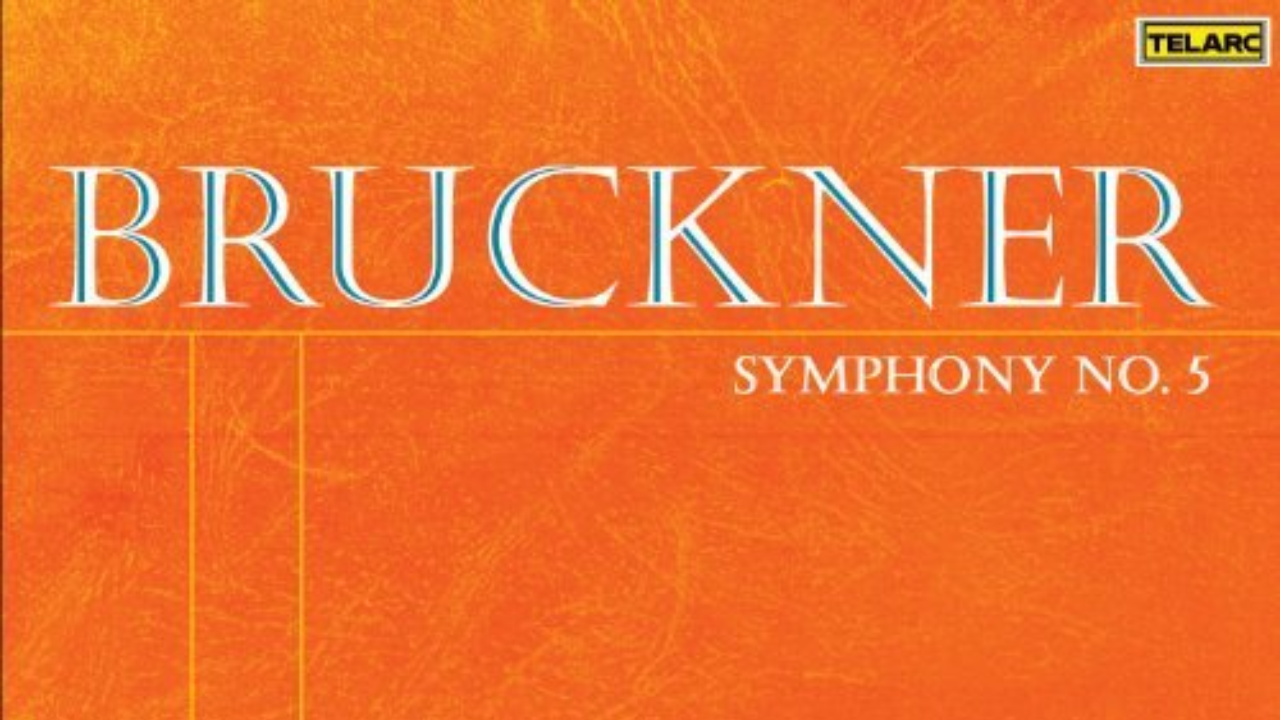Benjamin Zander discusses Bruckner’s Symphony No. 5

Bruckner’s Fifth Symphony was completed in May 1876 and slightly retouched in 1878. It was first printed in a butchered revision from Franz Schalk in 1896. The authentic final manuscript eventually was published in a 1936 edition by Robert Haas, which differs little from the later one produced by Leopold Nowak (performed here). The Fifth is the first unconditional success of Bruckner’s maturity, and its colossal last movement was described by conductor Wilhelm Furtwängler as “the most majestic finale” in the entire orchestral literature. In my view, the Fifth is one of Bruckner’s greatest masterpieces, along with the mighty Eighth and the unfinished Ninth. Those three works are the main reasons why I regard Bruckner as the finest Austro-German symphonist after Beethoven.
A press release that came with my copy of this CD set quotes Zander: “In working on the Bruckner Fifth, I became aware of how close his music is to Schubert. I avoided the very slow tempi that have become common in contemporary interpretations and emphasized the sprightly, forward moving urgency of the music.” Zander’s up-front candor is apt: this work can seem pretentious and over-blown when stretched past the 80-minute mark. As noted in reviewing Furtwängler’s live Bruckner (Fanfare 32:4), my favorite historic Fifths are the urgent 1942 Furtwängler/Berlin Philharmoic (68:50) and the wonderfully inflected 1963 Schuricht/Vienna Philharmonic (76:05), a live reading that I hope will be reissued by DG. However, both of those are mono recordings of a work that craves to be heard in stereo.
Of the various historic stereo accounts lasting less than 80 minutes, my preference is the warmly lyrical 1975 Kempe/Munich Philharmonic (74:50), once on a two-disc Odyssey LP set (regrettably, I missed the deleted CD transfers from Acanta and Scribendum). A “guilty pleasure” indulgence in the Fifth—it was my “imprint” version back in LP days—is the 1958 Jochum/Bavarian Radio (76:52), which is available in a nine-disc Bruckner CD set (DG). Jochum had great rapport with the Bavarian orchestra he founded in 1949, and the string playing is very rhapsodic. However, Jochum’s extreme tempo fluctuations lack the internal logic of Furtwängler and the subtler rubato of Schuricht. In a throwback to the discredited Schalk edition, an additional brass band of “11 Apostles”—four horns, three trumpets, three trombones and one bass tuba—is heard in the finale’s coda. The effect is stunning, but in so doing Jochum slows down the tempo by about 30 percent, which simply undermines the cumulative momentum that Bruckner surely intended.
To that list of personal favorites I must now add this quite remarkable new reading from Zander and the Philharmonia, which strikes me as the very finest Fifth of the digital era. The recorded sound is terrific, with an enormous dynamic range set against a completely silent background (for hardcore audiophiles, a separate SACD release is also available). With utmost fidelity to the score’s dynamic markings, Zander delivers a well-executed reading that captures all the lilting moods of this challenging work. The playing isn’t absolutely perfect—there are one or two imprecise moments in the strings and a couple of less than optimally balanced brass chords in the finale—but those amount to little more than minor defects in a grand master painting. At any rate, perfection is an unachievable goal in a work of such vast scope (although a few recordings out there are perfectly dull).
What truly cinches the indispensability of this set is its 80-minute bonus discussion disc. I suspect that some jaded collectors will now roll their eyes and think “Oh boy, just what I need: a musical appreciation disc!” If you are one of them, please think again. I can tell you without hesitation that what Zander delivers here is the most profoundly insightful and utterly illuminating discussion of any classical masterpiece in my experience. He is, above all, a superb communicator whose enthusiasm is altogether contagious. Because the Fifth is often noted for its “cathedral sound” and lofty architecture, Zander uses the extended metaphor of an actual cathedral’s floor plan in discussing each movement of the work (a handy foldout diagram is included with the booklet notes). I’ve been listening to this music for more than 40 years and will freely admit that Zander provided epiphanies for me at every turn. Zander also quotes extensively from World War I letters that his father wrote as a German soldier stationed on the Russian front (he happened to have a pocket score of the Fifth with him that was a birthday gift from the senior Zander’s own parents). This discussion disc also utilizes many illustrations taken from the recording and also from Zander himself on piano. Be prepared for some deeply moving moments.
This review must end now, lest you be unnecessarily detained from running out to buy this CD set. I will conclude with just three additional comments: 1) this recording of the Fifth is highly recommended; 2) the discussion CD here is a life-enriching experience; and 3) Bravo Zander!
Click here to listen to this recording.
 Jeffrey J. Lipscomb - Fanfare Magazine
Jeffrey J. Lipscomb - Fanfare Magazine